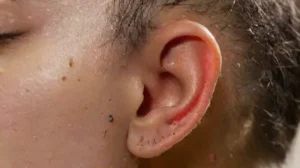Tattooing has become increasingly popular worldwide, allowing individuals to express their identity and creativity through body art. However, it also raises concerns about the safety and health risks associated with the procedure, especially when the skin is affected by infection. Many wonder whether it’s safe to get a tattoo over an inflamed or infected area, or if doing so could worsen the condition.
Understanding the risks and considerations involved in tattooing over infected skin is crucial for both clients and tattoo artists. While some infections might seem minor, they can pose serious health threats if tattooing is performed prematurely or without proper precautions.
Types of skin infections considered in tattooing
There are various types of skin infections that might be encountered when contemplating a tattoo over a compromised area. Bacterial infections, such as staphylococcus or streptococcus, are common and can cause redness, swelling, and pus. These infections require medical treatment before any additional injury to the skin.
Viral infections, like herpes simplex or shingles, may also affect the skin and are particularly risky. Tattooing over active viral lesions can cause the infection to spread or become more severe, leading to complications that may hinder healing or cause further health issues.
Fungal infections, including athlete’s foot or yeast infections, present another challenge. These infections can weaken the skin’s protective barrier, making it more susceptible to further contamination during tattooing procedures. Proper diagnosis and treatment are essential to prevent worsening the infection.
Risks of tattooing over infected skin
Tattooing over infected skin can significantly increase the risk of complications. One primary concern is the potential for spreading the infection to other parts of the body or to the tattoo artist through contaminated equipment.
Furthermore, infected skin can impede proper healing, leading to prolonged recovery times, scarring, or abnormal pigmentation. This can compromise the appearance of the tattoo and result in the need for corrective procedures.
Another critical risk is the possibility of developing a chronic infection or an abscess. The trauma caused by tattoo needles may trigger a bacterial or viral proliferation that could become difficult to treat, especially if the infection is left untreated before tattooing.
Medical considerations before tattooing over infections

Prior to getting a tattoo over an area of concern, consulting with a healthcare professional is essential. Medical evaluation can determine whether the infection is active or has been sufficiently treated to allow safe tattooing.
In some cases, a doctor might recommend postponing the procedure until the infection has completely cleared. They may also prescribe topical or systemic medications to resolve the infection, reducing the chances of complications.
Additionally, informing the tattoo artist about any current or recent infections is important. Experienced artists might refuse to proceed if they believe there’s a risk of exacerbating the infection or compromising safety standards.
Tattooing over healed or non-infected skin
Once an infection has fully healed, and the skin has returned to a healthy state, tattooing can typically proceed without added risks. The key is ensuring the skin has recovered completely, restoring its integrity and protective functions.
Healing times vary depending on the severity and type of previous infection but generally range from a few weeks to a couple of months. Patience is vital to avoid complications and ensure the best cosmetic outcome.
Proper aftercare is equally important during this period. Keeping the skin clean and protected helps maintain its health and prevents new infections from developing, thereby making it safe for tattooing.
Best practices for tattoo artists regarding infected skin

Tattoo artists should adhere to strict hygiene protocols to prevent cross-contamination. This includes sterilizing equipment, using disposable needles, and wearing protective gear such as gloves and masks.
Before starting a tattoo, artists should thoroughly evaluate the client’s skin condition. If signs of infection are present, they must advise postponing the session and recommend medical consultation. This prudent approach protects both parties and upholds professional standards.
In cases where clients insist on tattooing over areas with a history of infection, artists should document the situation and provide clear warnings about potential risks. Ethical practice mandates prioritizing health and safety above all.
Potential treatments post-tattooing on infected sites
If an infection occurs after tattooing, prompt treatment is crucial to prevent worsening of the condition. Antibiotics or antiviral medications may be prescribed based on the infection type, and maintaining proper hygiene is vital.
In some cases, medicated creams or ointments can help reduce inflammation and promote healing. If the infection persists or worsens, medical intervention might be necessary, potentially including drainage or other procedures.
Preventive measures, including proper tattoo aftercare and avoiding contact with contaminated environments, can significantly reduce the likelihood of post-tattoo infections. Awareness and early action are essential parts of responsible tattooing.
Conclusion
Tattooing over infected skin is generally contraindicated due to the high risks of complications, spreading infections, and impaired healing. It is essential to prioritize health and safety, ensuring that the skin has fully healed before considering a tattoo in that area.
Both clients and tattoo artists play a vital role in safeguarding against infection-related issues. Consulting healthcare professionals and following strict hygiene protocols can help ensure a safe and satisfying tattoo experience. Proper planning and awareness ultimately lead to better health outcomes and more beautiful results.







